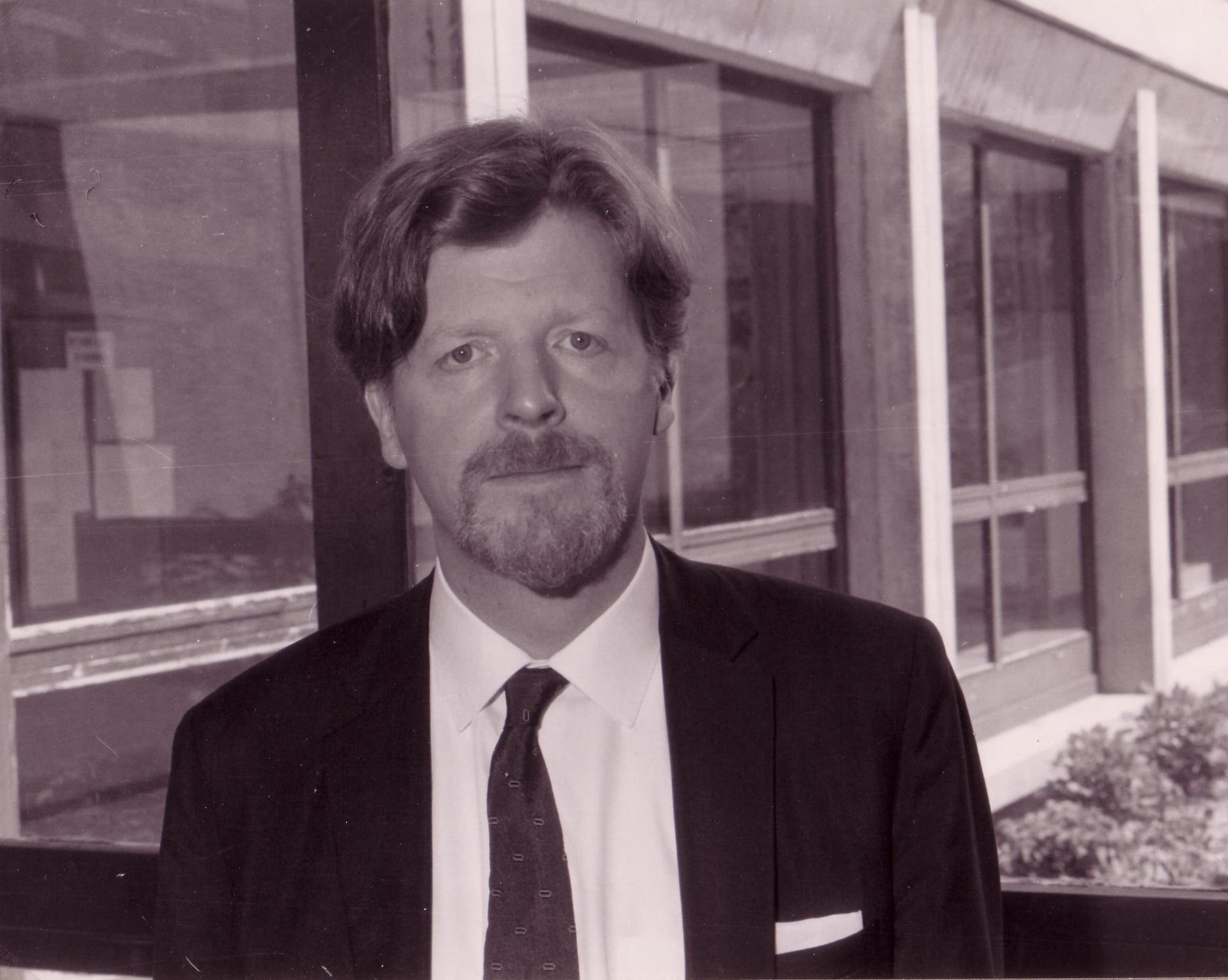Peter Wynn

This site is dedicated to Peter Wynn (1931-2017), an English mathematician mostly known for his discovery of the epsilon-algorithm for implementing Shanks sequence transformation. Wynn also worked on Padé approximation, continued fractions, and related topics.
After the death of Peter Wynn, many unpublished handwritten documents he left at the house of friends of him came to light. These documents are made available in the section Legacy.
Biography[1]
Peter Wynn was born on 1st September 1931 in Hertford, Hertfordshire, England, 20 miles (32km) north of London.
He first received a Bachelor of Science in mathematics in 1953, and then Master of Science in mathematics in 1954, both from the University of London. He began his career as a mathematician at the Admiralty Research Laboratory in Teddington in 1952-1953. Then he moved to the National Physical Laboratory, also in Teddington, for the period 1953-1955. At the time he published his paper on the epsilon-algorithm (in 1956, when he was only 25), he was attached to the Scientific Computing Service Ltd. in London (1955-1956). The following year finds Wynn as the Technical Director at the Computer Programming Service Ltd.
In 1958, Wynn received a research appointment for one year at the Technische Hochschule in Munchen, Germany. Then, he went to the Johannes Gutenberg-Universität in Mainz, where, in 1959, he defended a Ph.D. Thesis (with the title Über einen Interpolations-Algorithmus und gewisse andere Formeln, die in der Theorie der Interpolation durch rationale Funktionen) under the supervision of Friedrich Ludwig Bauer, and he became his assistant. In 1960, he obtained a Ph.D. from the University of London with a Thesis entitled on Converging Factors for Continued Fractions. Then, from 1960 to 1964, he was a researcher at the Mathematisch Centrum in Amsterdam, Netherlands, participating in the early developments of ALGOL with Adriaan van Wijngaarden. In 1965, the University of London granted Peter Wynn the degree of Doctor of Science (mathematics), a degree conferred on a scholar who has a recognized international reputation.
Next, Wynn held several researcher's positions in the United States and Canada. From 1964 to 1967, he was at the container1-titlerch Center of the University of Wisconsin in Madison. He spent the summer of 1967 at the Eidgenössische Technische Hochschule in Zürich, Switzerland. In 1968-1969, he went back to the Mathematisch Centrum in Amsterdam. Then, in 1969, he joined the Louisiana State University in New Orleans as an Associate Professor. This was the only academic position he held. After that, he came to the Centre de Recherches Mathématiques of the Université de Montréal from 1970 to 1975, before going to McGill University also in Montreal. He moved to Mexico in 1981, first in Guanajato and, from around 1990, in Zacatecas where he was a visiting professor at the Universidad Autónoma de Zacatecas for some time.
Peter Wynn died from a heart attack in December 2017 in his apartment in Zacatecas.
He first received a Bachelor of Science in mathematics in 1953, and then Master of Science in mathematics in 1954, both from the University of London. He began his career as a mathematician at the Admiralty Research Laboratory in Teddington in 1952-1953. Then he moved to the National Physical Laboratory, also in Teddington, for the period 1953-1955. At the time he published his paper on the epsilon-algorithm (in 1956, when he was only 25), he was attached to the Scientific Computing Service Ltd. in London (1955-1956). The following year finds Wynn as the Technical Director at the Computer Programming Service Ltd.
In 1958, Wynn received a research appointment for one year at the Technische Hochschule in Munchen, Germany. Then, he went to the Johannes Gutenberg-Universität in Mainz, where, in 1959, he defended a Ph.D. Thesis (with the title Über einen Interpolations-Algorithmus und gewisse andere Formeln, die in der Theorie der Interpolation durch rationale Funktionen) under the supervision of Friedrich Ludwig Bauer, and he became his assistant. In 1960, he obtained a Ph.D. from the University of London with a Thesis entitled on Converging Factors for Continued Fractions. Then, from 1960 to 1964, he was a researcher at the Mathematisch Centrum in Amsterdam, Netherlands, participating in the early developments of ALGOL with Adriaan van Wijngaarden. In 1965, the University of London granted Peter Wynn the degree of Doctor of Science (mathematics), a degree conferred on a scholar who has a recognized international reputation.
Next, Wynn held several researcher's positions in the United States and Canada. From 1964 to 1967, he was at the container1-titlerch Center of the University of Wisconsin in Madison. He spent the summer of 1967 at the Eidgenössische Technische Hochschule in Zürich, Switzerland. In 1968-1969, he went back to the Mathematisch Centrum in Amsterdam. Then, in 1969, he joined the Louisiana State University in New Orleans as an Associate Professor. This was the only academic position he held. After that, he came to the Centre de Recherches Mathématiques of the Université de Montréal from 1970 to 1975, before going to McGill University also in Montreal. He moved to Mexico in 1981, first in Guanajato and, from around 1990, in Zacatecas where he was a visiting professor at the Universidad Autónoma de Zacatecas for some time.
Peter Wynn died from a heart attack in December 2017 in his apartment in Zacatecas.
[1] - Extracted from
C. Brezinski, M. Redivo-Zaglia
The genesis and early developments of Aitken's process, Shanks' transformation, the epsilon-algorithm, and related fixed point methods
Numer. Algorithms, 80 (2019) 11-133.
C. Brezinski, M. Redivo-Zaglia
The genesis and early developments of Aitken's process, Shanks' transformation, the epsilon-algorithm, and related fixed point methods
Numer. Algorithms, 80 (2019) 11-133.
